History. In 1949, EMD put its proven 567 diesel engine into a hood-type body that allowed good visibility front and rear and easy access to the engine. The design was designated GP7 with the “GP” standing for general purpose.
The versatile GP7 was an immediate hit. Railroads assigned them to every conceivable duty from peddler freights to mainline passenger trains.
Over the course of 41⁄2 years, from October 1949 to May 1954, EMD produced 2,724 GP7s for North American railroads, as well as five cabless GP7B boosters for the Atchison, Topeka & Santa Fe Ry. Some were rebuilt by EMD or their owners to upgrade their diesel engines, add turbochargers, or lower their short hoods for improved visibility. A few of the venerable GP7s are still running today, in the service of museums, tourist railroads, and short lines.
Atlas’ model represents an early production version, known to railfans as a phase 1. This version is identifiable by a solid skirt hanging from the side sill alongside the fuel tanks; later versions have access holes cut in the skirts, or the skirts have been removed altogether.
Our sample is painted for the Chicago, Burlington & Quincy. The separation between the colors is crisp, with only a few tiny voids where white printing crosses indented panel lines or door latches. The “Burlington Route” heralds on the cab are sharp and legible, as are the “GP7” and “F” labels on the front
of the side sills.
Accumate magnetic knuckle couplers are attached to the pilots, at the correct height. They don’t need to be removed to take off the shell. The shell is friction-fit onto the split die-cast metal frame; the shell can be removed by holding onto it and gently tapping the pilot against the side of your hand. The frame will eventually drop right out.
Inside the shell, twin phosphor-bronze wipers pick up current from contacts on top of the trucks and conduct it to the two halves of the frame. The DCC decoder (or the lighting board, in direct-current models) is held in by clips on top of the frame; contacts on the bottom of the decoder provide current to the five-pole, skew-wound motor nestled in the center of the frame. Dual flywheels surround the driveshafts that transmit motive power to the trucks.
When I tested the locomotive under DCC, it didn’t respond at first to the lower speed steps. The engine didn’t move until I turned the throttle up to speed step 8 (out of 28). I could then dial it back to speed step 6, at which it rolled 6.4 scale mph. The model stalled at speed step 5. To fix this, I programmed the decoder’s configuration variables (CV) 2, or Vstart; CV116, the torque compensation kick rate; and CV117, the torque compensation kick strength.
Vstart stands for starting voltage, the voltage the decoder sends to the motor in speed step 1. To start I set it to a value of 48, which is fairly high. This worked, but I was unhappy with how fast this setting made the engine move in speed step 1. So I lowered the value to 42, and compensated with CV116 and CV117.
These two CVs tell the decoder to “kick” the motor, or send intermittent spikes of higher voltage, to overcome inertia at low speed. Configuration Variable 116 tells it how often to send the kicks; it defaults to a setting of 0 (off). A setting of 1 sends kicks continually. The NCE decoder manual recommends a setting of 2 to 4, and no higher than 8.
I set it to 2. The other setting, CV117, is the strength of the kick. The manual says a typical setting is between 4 and 25; after some experimentation, I settled on a minimal setting of 6. After I programmed these CVs, the model responded in step 1 with a speed of 8 scale mph. These are the settings shown in the speed charts below.
At speed step 28, the locomotive reached a top speed of 99 scale mph, much higher than the prototype’s 65 mph. The top speed can be lowered using CV5 (Vmax). The decoder also supports 3-point and 28-step speed curves.
To make the diminutive locomotive behave as if it had some real heft, I entered a value of 24 into both CV3, acceleration, and CV4, deceleration. This made the engine respond to speed changes gradually, as if it were actually a massive machine. On a small layout, a less ambitious setting of 12 to 16 would be sufficient to give the same effect.
I also wanted to make the headlight operation more prototypical. As it comes programmed from the factory, the front and rear headlights illuminte directionally, based on the throttle’s FWD/REV setting. I wanted to be able to manually dim those lights, so I programmed CV120, which governs output 1 (the headlight), to a value of 33.
This illuminates the headlight if the throttle is set to FWD and function key F0 is activated, but dims the light if F4 is also pressed. A value of 34 programmed into CV121 does the same thing in reverse for the rear headlight. The NCE manual explains light settings to use for other effects, like having both lights always on but dimmed in the reverse direction rather than off. The manual can be downloaded at www.ncedcc.com.
I put the locomotive through its paces on our N scale Canadian Canyons layout. The model rolled through the 11″ curves, Peco medium-radius turnouts, and five-turn helix without a hiccup.
Using a digital force meter I tested the model’s drawbar pull. The GP7 measured 0.48 ounce, which is equivalent to 12 free-rolling N scale freight cars on straight and level track.
Direct-current (DC) operation. Those who don’t use DCC to control their layouts will note that there’s a DC version available for $119.95. However, since our review sample’s decoder is dual-mode, meaning it will run on either DC or DCC layouts, I also ran our GP7 on our DC test track. The model responded at 6V, but I could then back it down to 5V where It rolled steadily at 9 scale mph. At 12V, it reached 92 scale mph.
The headlights and illuminated number boxes switched from front to rear with the power pack’s direction switch, but they illuminated on the wrong end in both directions. The rear headlight shone when moving forward, and the headlight lit in reverse.
Transition-era star. Most railroads of note in North American rostered EMD GP7s. The convenience of factory-installed DCC and accurate detailing make the Atlas GP7 an excellent choice for N scale modelers looking to expand their transition-era fleets.
Manufacturer
Atlas Model Railroad Co. Inc.
378 Florence Ave.
Hillside, NJ 07205
www.atlasrr.com
Era: 1949 to present (1959 to 1970, as decorated)
Road names: Chicago, Burlington & Quincy; Denver & Rio Grande Western (black and Aspen Gold); Lackawanna (black and gold); and Southern Ry. (black, silver, and gold). Two road numbers each; also available undecorated, with or without dynamic brakes.
Features
Accumate magnetic knuckle couplers, at correct height
All-wheel drive and electrical pickup
Blackened metal wheels, in gauge
Directional golden-white light-emitting-diode (LED) lighting
Five-pole skew-wound motor with dual flywheels
NCE decoder (DCC version)
Weight: 2.3 ounces





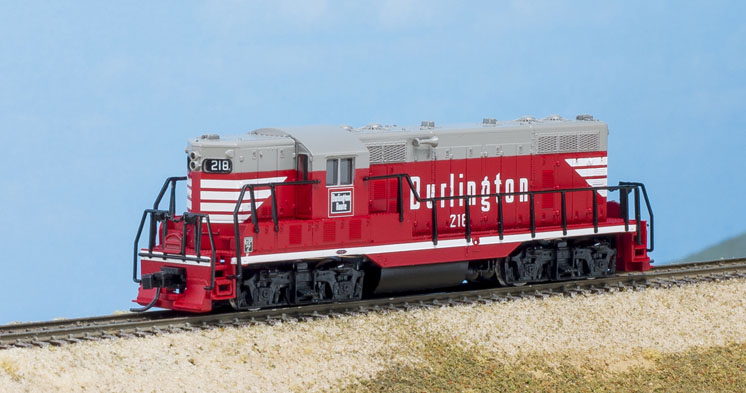
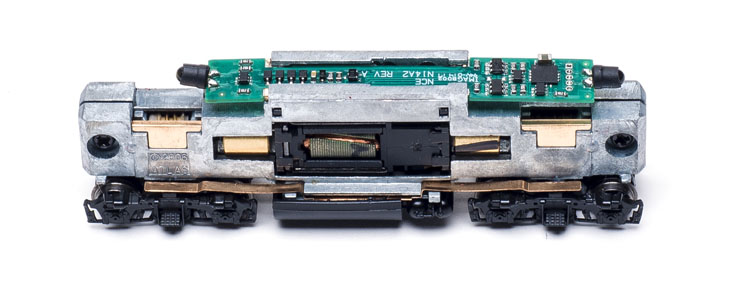
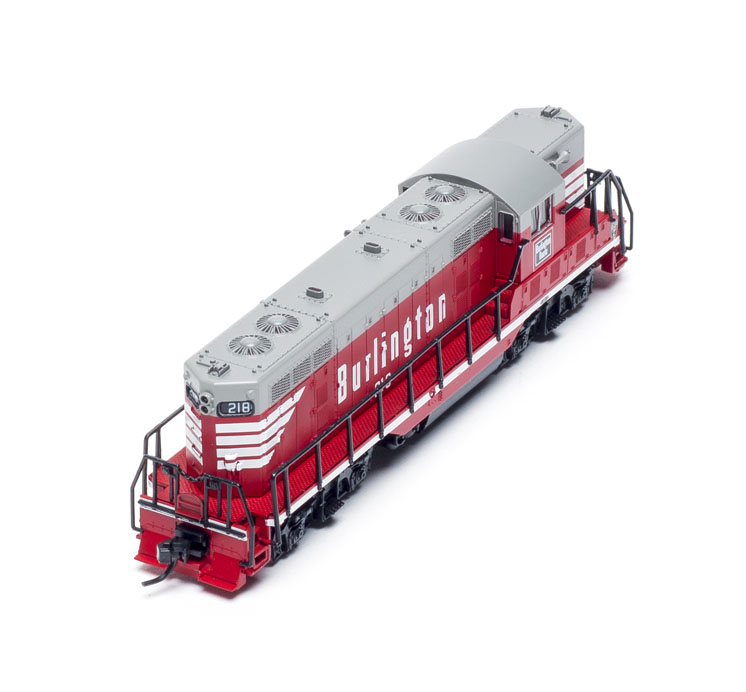
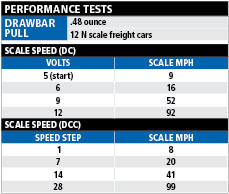

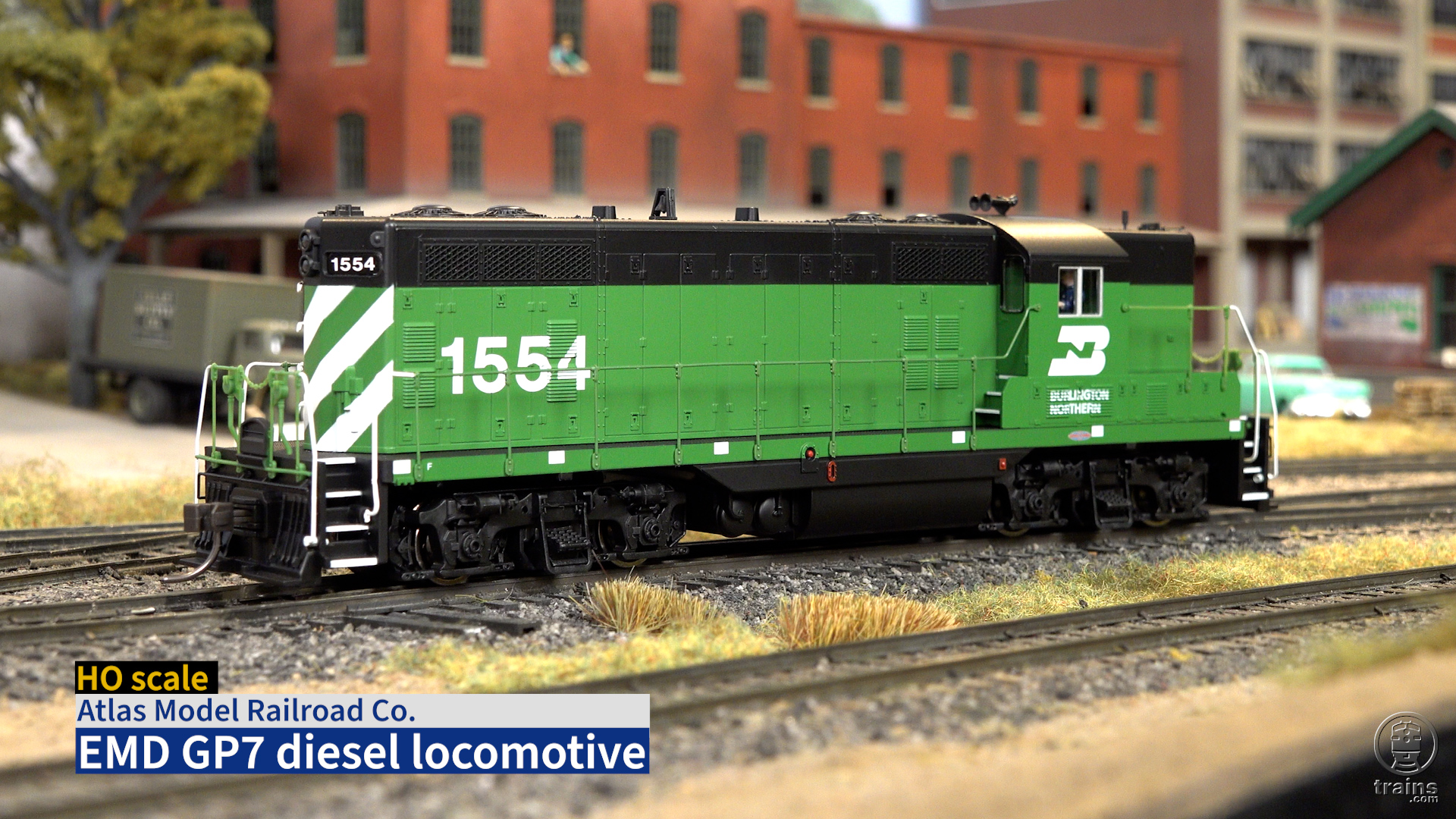
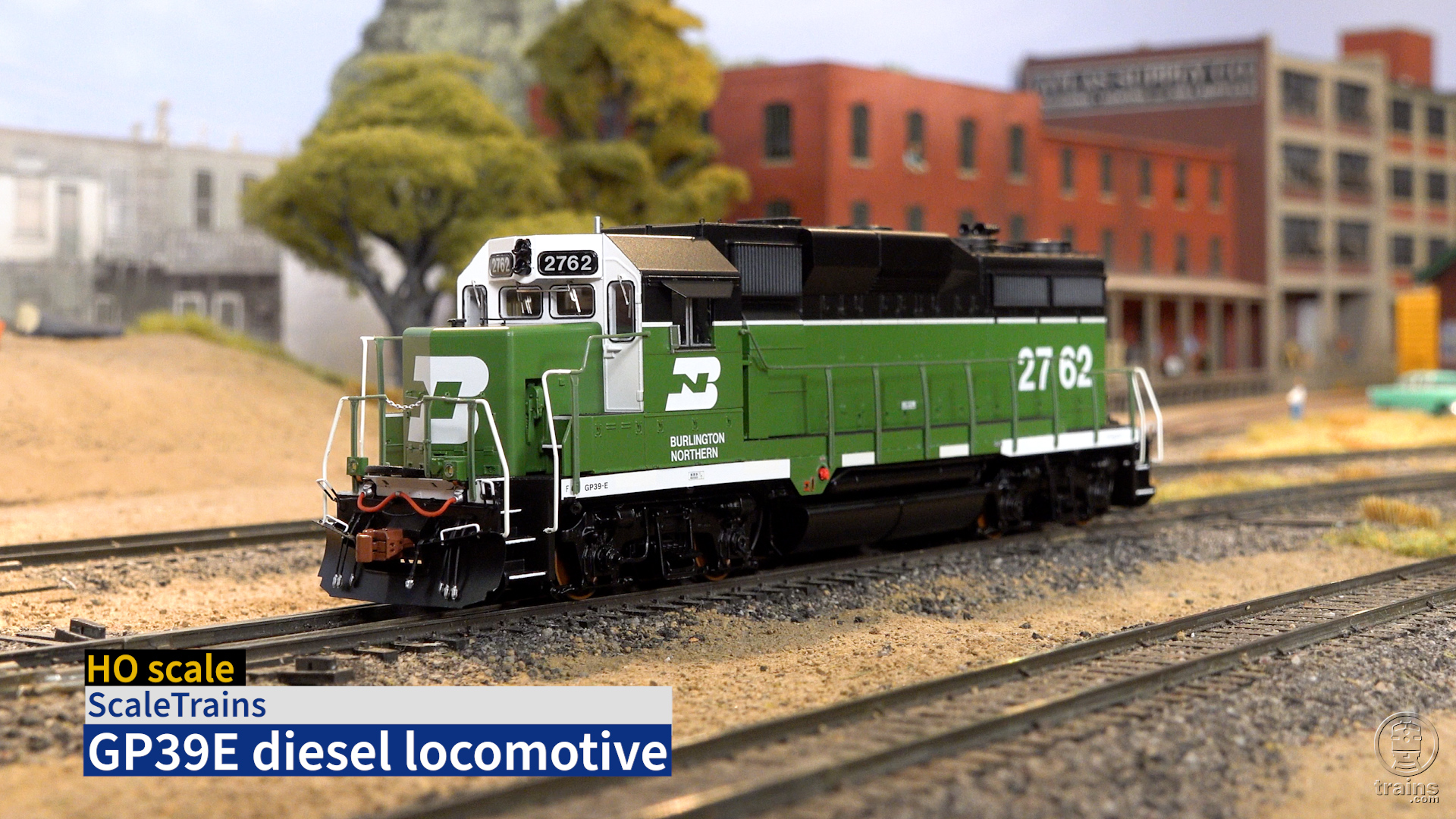
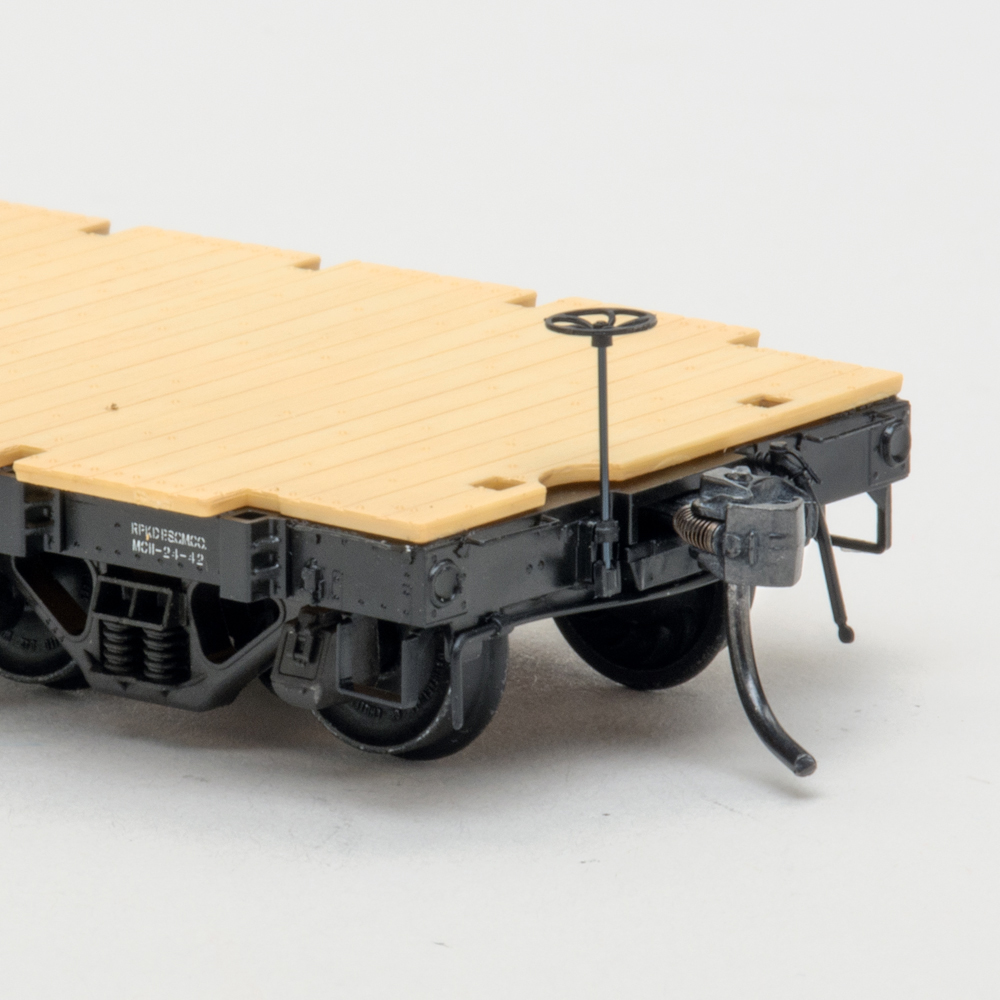
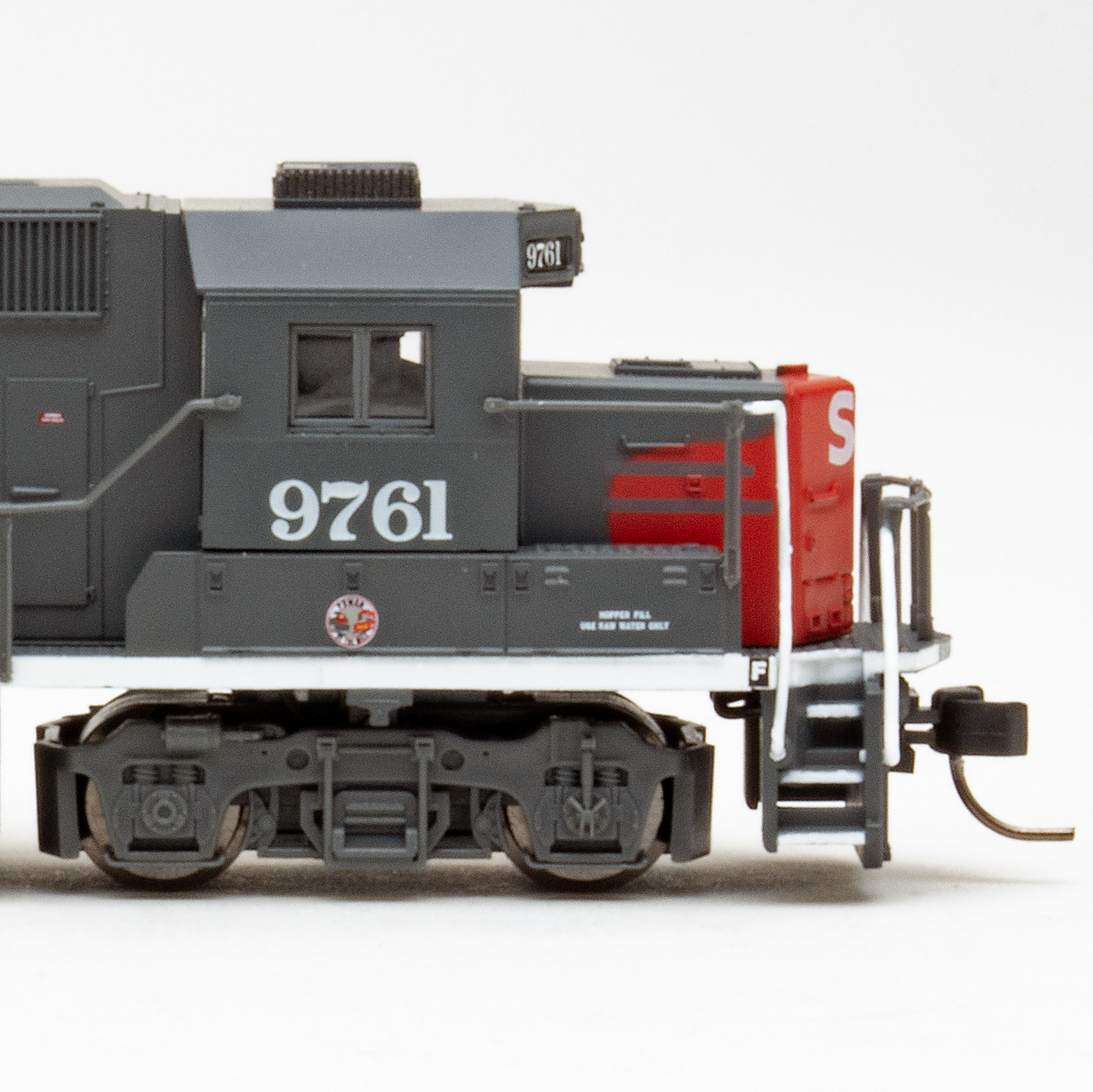




I’ve been able to get other Atlas engines to crawl at < 1mph. Were you able to find the cause of the poor low speed performance of this GP7?